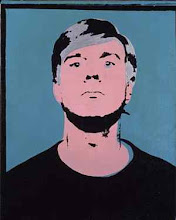 |
| Paolo Veronese, Perseus and Andromeda, 1575-80 |
Veronese was "one of the greatest painters who have ever lived", is the bold claim of Xavier Salomon, curator of this exhibition; Nicholas Penny, director of the National Gallery is reported to agree with Salomon that The Martyrdom of St George (c.1565, see below) is 'arguably the world's greatest painting'.
I simply haven't seen enough Veronese (yet) to know if this is overwrought hyperbole or sound judgement. But just on the basis of reproductions of paintings such as Perseus and Adndromeda (above) I am ready to be seduced. Reviews, too, have been pretty positive:
"The show of a lifetime. This is the first – and quite likely the last – chance we will have to see his soaringly beautiful art at full stretch in this country." (Laura Cumming)
Veronese (1528-88), born Paolo Caliari in Verona (hence 'Veronese') became one of the leading artists of Venice alongside Titian (c.1490-1576), the sculptor Sansovino (1486-1570) and architect Andrea Palladio (1508-80). He was notable for large scale paintings of mythological and biblical subjects.
In 1573 Veronese was summoned before the Inquisition to explain the inclusion of inappropriate figures in his painting of the Last Supper: "Did some person order you to paint Germans, buffoons, and other similar figures in this picture?", Veronese responded: "When I have some space left over in a picture, I adorn it with figures of my own invention… ". Ordered to remove the offending figures 'at his own expense', Veronese simply retitled the painting Feast at the House of Levi (see below - NB not included in exhibition).
Read reviews by Laura Cumming, Waldemar Januszczak, Richard Dorment; watch a short video of Nicholas Penny talking about the Adoration of the Kings. Click on images to enarge.
 |
| Paolo Veronese,The Martyrdom of St George, c.1565 |
 |
| Paolo Veronese, Lucretia, 1580s |
+(Italian,+1528-1588)+++1560s+Portrait+of+a+Woman+known+as+Countess+Nani+or+La.jpg) |
| Paolo Veronese, Portrait of a Lady, known as the "Bella Nani", c.1560-5 |
 |
| Paolo Veronese, The Adoration of the Kings, 1573 |
 |
| Paolo Veronese, The Conversion of Mary Magdalene, c1548 |
 |
| Paolo Veronese, Mars and Venus United by Love, 1570s |
 |
| Paolo Veronese, The Feast at the House of Levi, 1573 |









